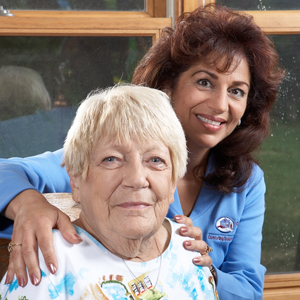Senior Suicide Prevention
While suicide is not always the end result of depression, those contemplating suicide often experience depression. In any case, there are warning signs that may indicate the possibility of suicide.
 Many seniors enjoy their later years by spending time with family and friends, traveling and other activities that make their lives complete. After all, the golden years are supposed to be golden, aren't they?
Many seniors enjoy their later years by spending time with family and friends, traveling and other activities that make their lives complete. After all, the golden years are supposed to be golden, aren't they?
While this is true for some seniors, others find these years overwhelming. The reasons vary and include loneliness and isolation after the loss of a beloved spouse, lasting complications or pain stemming from medical conditions, economic lifestyle changes, the stress of caring for a disabled spouse, the lack of the robustness of youth, or a combination of these and other factors.
Seniors experience occasional feelings of unhappiness or can become upset just as the rest of us do. However, some are unable to easily bounce back. Life seems unbearable and, unfortunately, for many, these thoughts lead to suicide. In fact, research shows the suicide rate for seniors across the nation is 50 percent higher than all other age groups combined.
Experts agree that suicide prevention is crucial. Friends and loved ones, as well as caregivers, should learn the basics of detecting susceptible seniors. This includes the risk factors, warning signs and preventative measures needed to protect seniors from suicidal tendencies.
While suicide is not always the end result of depression, those contemplating suicide often experience depression. Therefore, seniors in high-risk groups should be screened for depression. Experts describe depression as a terminal illness for some. For others, depression can be successfully treated. In any case, there are warning signs that may indicate the possibility of suicide.
Seniors at risk for suicide may exhibit some of the following behaviors:
- altered sleeping patterns
- changes in eating habits
- disheveled appearance; poor grooming habits
- lack of concentration
- changes in behavior
- isolation from family and friends
- unexplained fatigue
- loss of interest in things that were once important (work, activities, hobbies)
- obsession with death
- severe and uncontrollable mood swings
- increased alcohol or drug abuse
- giving away belongings
- feelings of hopelessness; anxiety
- lack of purpose
Be aware that suicidal tendencies are harder to detect in seniors than other age groups. Seniors experience a myriad of life-changing events so one might expect them to be depressed from time-to-time without realizing they are contemplating suicide. Many seniors, especially males, do not discuss feelings of discontent or hopelessness. They may feel embarrassed to do so. Therefore, it is important to be familiar with the facts: know that senior men commit suicide more often than their female counterparts; seniors who have recently lost a spouse, either by death or divorce, are at high risk for suicide; seniors who abuse alcohol and drugs also fall into the high-risk category.
If seniors portray symptoms of possible suicide risk, intervene immediately. Talk to seniors about their troubles and fears. Seek professional help and let them know they are not alone. This may seem a daunting task at first but can mean the difference between life and death.
Although depression is the leading cause of suicide among all ages, isolation is reportedly a high-risk factor of suicide among the senior population. Take steps to ensure the senior in your life is not left bereft and feeling alone. Visit often. Interact by playing games, dining together, or simply talking. Frequent visits help determine if seniors are doing well. Interacting provides the opportunity to look for and gauge the signs listed above in an unobtrusive way. Furthermore, these social calls may provide seniors something to look forward to, make them feel less isolated and give them a greater sense of purpose.
References:
Centers for Disease Control (2012). Suicide, facts at a glance.
Brody, Jane E. New York Times (2007). Preventing suicide among the elderly.
McIntosh, John Ph.D. How to help suicidal older men and women.
Sign up to receive helpful info right to your inbox.
We understand choosing an in-home care provider can be a difficult decision, and we want to make your journey as easy as possible. We're here to support you by providing helpful senior care tips and information on in-home care and senior health and wellbeing topics.
Start a Job with a Purpose
Uplifting training and support for you every step of the way.
Apply to be a caregiver







